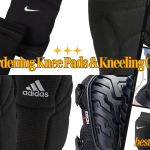Playing sports and games is a great way to keep yourself physically fit while having fun. However, getting injured while participating in sports activities can be a real setback. Injuries can cause pain, limit mobility, and even put an end to your ability to play the sport you love. With proper precautions, you can avoid unnecessary injuries while still enjoying the benefits of physical activity.
In this article, we will explore essential safety measures that can help players avoid injuries while participating in sports and games. By following these guidelines, you can ensure a fun-filled gameplay experience without worrying about getting hurt.
Key Takeaways
- Injuries can put an end to your ability to play the sport you love
- Proper precautions can help you avoid unnecessary injuries
- Adhering to the rules and regulations of the sport is crucial for maintaining a safe environment
- Wearing appropriate protective gear can significantly reduce the risk of physical trauma
- Regular rest and recovery play a vital role in injury prevention
Proper warm-up and stretching routines
Before engaging in any sports activity, it is crucial to perform a proper warm-up routine. This helps to increase blood flow to the muscles, making them more flexible and less prone to injury. Incorporating stretching exercises into your warm-up routine can further enhance flexibility and reduce the risk of muscle strains or sprains.
A good warm-up routine can include cardio exercises such as jogging or jumping jacks, followed by dynamic stretching exercises like leg swings, arm circles, and lunges. It is important to avoid static stretching, as it can actually increase the risk of injury if done before the muscles are warmed up properly.
The duration of your warm-up should be at least 10-15 minutes, gradually increasing intensity and incorporating specific movements required for the sport or game.
By following a proper warm-up and stretching routine, you can reduce the risk of injury and improve your performance while playing.
Appropriate Use of Protective Gear
Playing sports involves physical contact and movement that can lead to injuries. To minimize the risk of bodily harm, players should wear appropriate protective gear while engaging in sports activities. Protective gear refers to equipment worn to safeguard players from potential injuries that may result from impact, collision, or falls.
There are various types of protective gear available for different sports and games. Protective gear typically includes helmets, mouthguards, knee pads, elbow pads, and shin guards. Sports equipment such as gloves, shoulder pads, and chest protectors may also provide some level of protection.
While selecting the right protective gear, it is crucial to ensure that it is suitable for the specific sport or game, fits correctly, and is well-maintained. Ill-fitting equipment may cause discomfort or restrict movement, compromising safety. Proper maintenance of gear is also essential to ensure that it remains functional and provides adequate protection.
The use of protective gear can significantly reduce the risk of injury while playing sports or games. For example, helmets can protect the skull and brain from head injuries caused by collisions or falls. Knee pads and elbow pads can reduce the impact of falls and protect the joints from injuries. Mouthguards prevent dental injuries and protect the mouth and jaw from damage. Shin guards are essential for protecting the lower leg from trauma during soccer and other similar sports.
It is important to note that protective gear alone cannot guarantee complete safety during sports activities. Players should also follow other safety guidelines, such as proper warm-up and stretching routines, adhering to sports rules and regulations, and focusing on training and skill development. Together with protective gear, these measures can help prevent injuries and ensure a positive and safe sports experience.
Following the Rules and Regulations
The rules and regulations of any sport or game are designed to maintain a safe environment for all participants. Adhering to these guidelines not only significantly reduces the risk of injuries but also promotes fair play and equal opportunity for all players.
It is important to familiarize yourself with the specific rules and regulations of the sport or game you are participating in. This includes understanding the proper techniques for physical contact, the use of equipment, and any restrictions or limitations on certain actions.
Additionally, following safety guidelines such as avoiding dangerous tackles or hits and reporting any injuries immediately can help prevent further harm and ensure a safe environment for everyone involved.
Remember, fair play and safety go hand in hand. By following sports rules and safety guidelines, players can enjoy the game while minimizing the risk of unnecessary injuries.
Training and Skill Development
Proper training and skill development are essential for injury prevention in sports activities. By working on building strength, endurance, and agility, players can perform at their best and minimize the risk of accidents or muscle imbalances. It is important to gradually progress in training intensity and always prioritize proper technique to avoid overexertion or strains.
Whether you are a beginner or an experienced player, incorporating a variety of workouts into your training routine can help improve your skills and overall physical fitness. This can include cardio exercises such as running or cycling, strength training with weights or resistance bands, and agility drills like ladder drills or cone drills.
Remember to always warm up properly before beginning any training session. This helps to increase blood flow to the muscles, making them more flexible and less prone to injury. Incorporating stretching exercises into your warm-up routine can further enhance flexibility and reduce the risk of muscle strains or sprains.
Additionally, seeking guidance from a qualified coach or trainer can be beneficial in developing proper form and technique, which can help prevent injuries and improve performance.
By making training and skill development a priority, players can not only improve their abilities on the field or court but also reduce the risk of unnecessary injuries.
Regular Rest and Recovery
Rest and recovery are essential components of injury prevention. When we participate in sports or exercise, our muscles undergo repetitive stress and strain. To prevent overuse injuries and allow for proper muscle repair, we must prioritize rest and recovery.
Rest days should be incorporated into any training schedule to allow the body time to heal and repair itself. Additionally, adequate sleep is crucial for muscles to repair and recover. Most adults need 7-9 hours of sleep per night, although some may require more or less depending on their individual needs.
Active recovery, such as low-impact exercises or stretching, can also help promote blood flow and muscle repair. This can include activities such as yoga, swimming, or cycling. However, it is important not to over-exert yourself during active recovery, as this can lead to further muscle damage.
Remember that rest and recovery should be a priority, not an afterthought. By allowing our bodies sufficient time to heal and repair, we can prevent injuries and perform at our best during sports and exercise.
Conclusion
Playing sports and games can be a great way to stay active and have fun, but it’s important to prioritize safety to avoid unnecessary injuries. By following the safety measures outlined in this article, you can greatly reduce the risk of getting hurt while enjoying your favorite activities.
Remember to always perform a proper warm-up routine before starting any sports activity and incorporate stretching exercises to increase flexibility and prevent muscle strains. Wearing the appropriate protective gear can also significantly reduce the risk of physical traumas.
It’s also important to follow the rules and regulations of the sport or game to maintain a safe environment and promote fair play. Moreover, prioritizing proper training and skill development can help prevent accidents or muscle imbalances.
Rest and recovery
Finally, regular rest and recovery play a crucial role in injury prevention. Give your body enough time to heal and repair itself to prevent overuse injuries and fatigue. Make sure to incorporate regular rest days into your training schedule and get enough sleep each night to promote optimal recovery.
By implementing these safety measures, you can ensure a fun-filled gameplay experience without the worry of getting hurt. Always remember, safety should be a top priority to ensure an enjoyable and injury-free experience.










